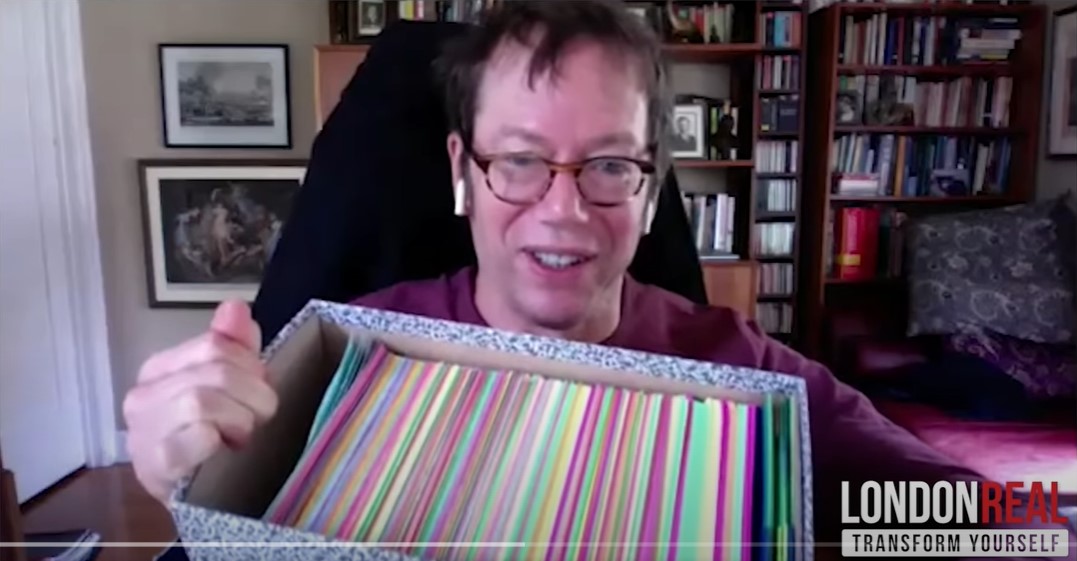Origin of Robert Greene's (May 14, 1959 - ) note taking system using index cards:<br />
Greene didn't recall a specific origin of his practices, but did mention that his mom found some index cards at his house from a junior high school class. (Presuming a 12 year old 7th grader, this would be roughly from 1971.) Ultimately when he wrote 48 Laws of Power, he was worried about being overwhelmed with his notes and ideas in notebooks. He naturally navigated to note cards as a solution.
Uses about 50 cards per chapter.
His method starts by annotating his books as he reads them. A few weeks later, he revisits these books and notes to transfer his ideas to index cards. He places a theme on the top of each card along with a page number of the original reference.
He has kept much the same system as he started with though it has changed a bit over time.
You're either a prisoner of your material or a master of your material.
This might not be the best system ever created, but it works for me.
When looking through a corpus of cards for a project, Robert Greene is able to make note of the need to potentially reuse a card within a particular work if necessary. The fact that index cards are inherently mobile within his projects make them easy to move and reuse.
I haven't heard in either Robert Greene or Ryan Holiday's practices evidence that they reuse notes or note cards from one specific project to the next. Based on all the evidence I've seen, they maintain individual collections for each book project for which they're developing.
[...] like a chameleon [the index card system is] constantly changing colors or [like] something that's able to change its shape at will. This whole system can change its shape as I direct it.

